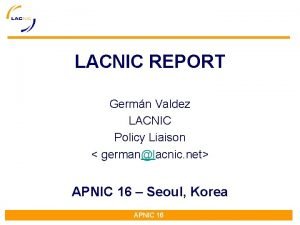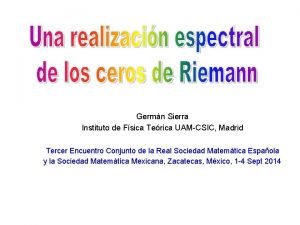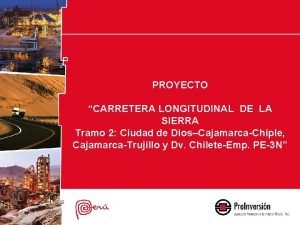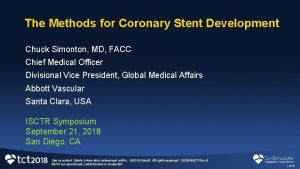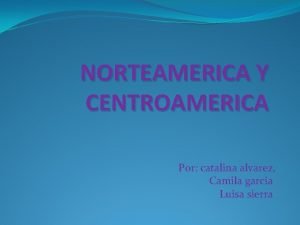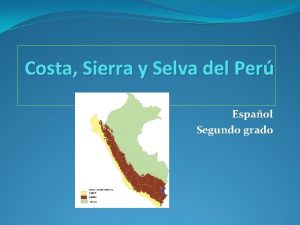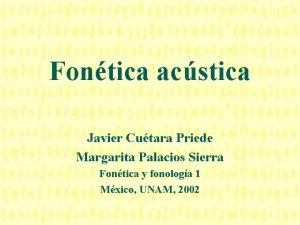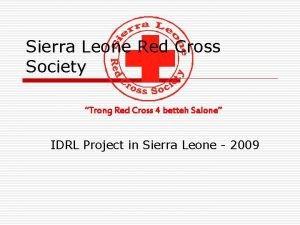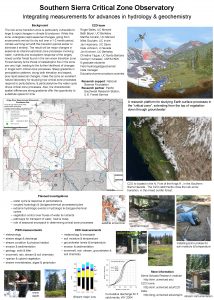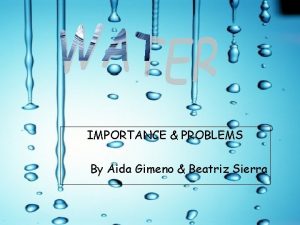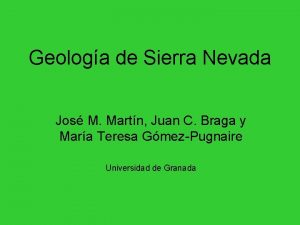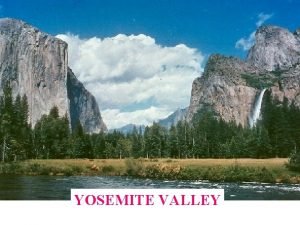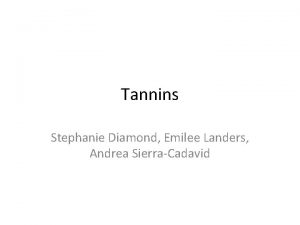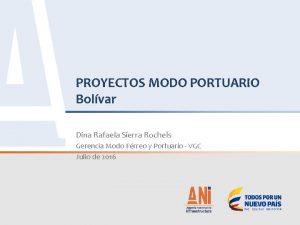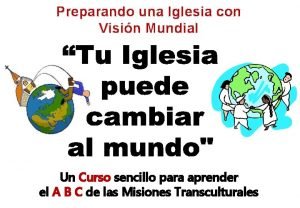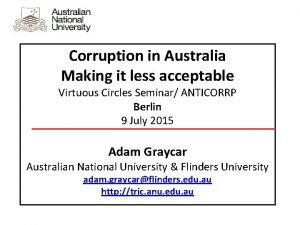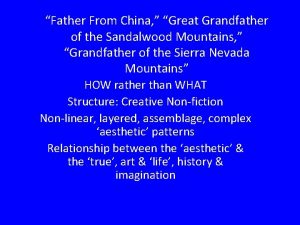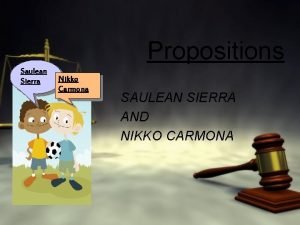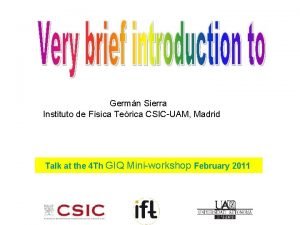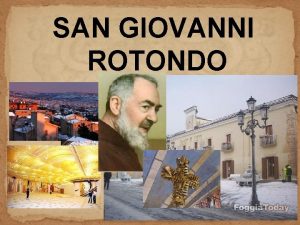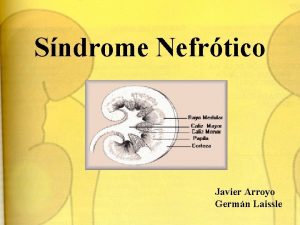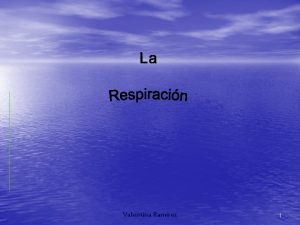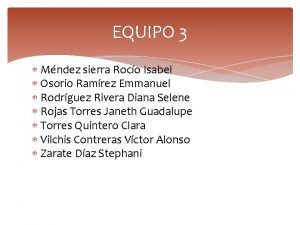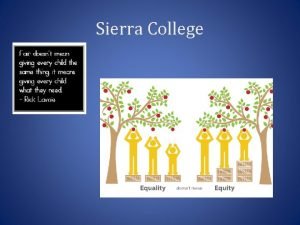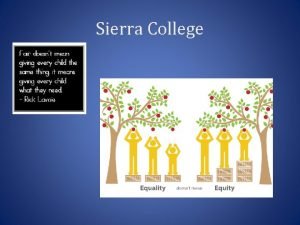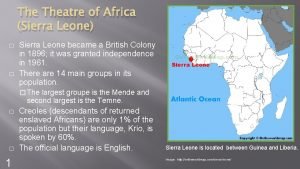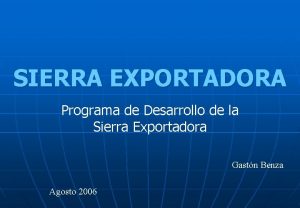Giovanni Ramrez Javier RodrguezLaguna Germn Sierra Instituto de















































- Slides: 47

Giovanni Ramírez, Javier Rodríguez-Laguna, Germán Sierra Instituto de Física Teórica UAM-CSIC, Madrid Workshop “Entanglement in Strongly Correlated Systems” Centro de Ciencias de Benasque Pedro Pascual, 14 -27 February 2016

If is the ground state of a local Hamiltonian

Basis of Tensor Networks (MPS, PEPS, MERA, . . ) (c) MERA

Hastings theorem (2007): In 1 D Conditions: -Finite range interactions -Finite interaction strengths -Existence of a gap in the spectrum In these cases the GS can be well approximated by a MPS (Verstraete, Cirac, Schuch, Perez-Garcia, Vidal, Latorre, Orus, Iblisdir …)

Violations of the area law in 1 D require one of the following - non local interactions - divergent interactions - gapless systems Best well known examples are CFT and quenched disordered systems -> Log violations of entropy Here we shall investigate a stronger violation Entanglement entropy satisfies a volumen law

References: 1) From conformal to volume-law for the entanglement entropy in exponentially deformed critical spin 1/2 chains; J. Stat. Mech. (2014) 2) Entanglement over the rainbow; J. Stat. Mech. (2015) G. Ramírez, J. Rodríguez-Laguna, GS Work in progress with Sebastián Montes

Inhomogenous free fermion model in an open chain with 2 L sites Introduced by Vitigliano, Riera and Latorre (2010) Equivalent to an inhomogenous XX spin chains

Strong inhomogeneity limit -> Renormalization group method Weak inhomogeneity limit -> Exact solution and Field theory 0 1 Uniform model

Dasgupta-Ma method (1980) At the i-th bond there is a bonding state In second order perturbation This method is exact for systems with quenched disorder (Fisher, …)

Choosing the J’s at random -> infinite randomness fixed point Average entanglement entropy and Renyi entropies Refael, Moore 04 Laflorencie 05 Fagotti, Calabrese, Moore 11 Ramirez, Laguna, GS 14 CFT Renyi

Strong inhomogeneity limit The strongest bond is in the middle of the chain Effective coupling: This new bond is again the strongest one because

Repeating the process one finds the GS: valence bond state bonding/antibonding operators GS = valence bond state between the left and right halves Concentric singlet phase (Vitigliano et al) or rainbow state It is exact in the limit (fixed point of the RG)

Density matrix of the rainbow state B: a block number of bonds joining B with the rest of the chain has an eigenvalue with multiplicity von Neumann entropy Moreover all Renyi entropies are equal to the von Neumann entropy

Take B to be the half-chain then Maximal entanglement entropy for a system of L qubits The energy gap is proportional to the effective coupling of the last effective bond Hasting’s theorem is satisfied Define Uniform case

Hopping matrix Particle-hole symmetry Ground state at half-filling

Uniform model Non uniform model scaling behaviour Scaling variable

Correlation method (Peschel, Latorre, Korepin…) Two point correlator in the block B of size Diagonalize finding its eigenvalues Reduced density matrix of the block von Neumann entropy


For small and L large there is a violation of the area law that becomes a volumen law. This agrees with the analysis based on the Dasgupta-Ma RG What about the limit near the critical model?

Uniform model Fast-slow separation of degrees of freedom c=1 CFT with open boundary conditions

Non uniform model Left and right components are decoupled in the bulk but they mixed at the boundary

Single particle spectrum

Eigenfunctions

Mapping the rainbow into the free fermion h 0. 3 0. 2 0. 1 0

For x>0 is a conformal map Also for x <0. But it is not conformal in the whole line Periodicity in imaginary time Effective “temperature”

Entanglement entropy of half-open-chain In a CFT For the non uniform case the map suggests to replace

Volumen law as a thermal effect Compare with entropy of a CFT at finite temperature The inhomogeneity coupling h can be seen as “temperature”

Half chain Renyi entropies Free fermion open chain (Fagotti, Calabrese)

Half chain Renyi entropies for the Rainbow In the CFT formula replace

Entanglement Hamiltonian For free fermions Single particle entanglement energies White in the DMRG Cardy, Calabrese, Peschel, … integrable systems Li, Haldane for the FQHE Lepori, De Chiara, Sanpera phase transitions ….

: entanglement energies L=40 L: even L: odd L=41

Entanglement entropy and “level spacing” Approximation This formula is general and can be applied to critical, massive and the rainbow model

Critical model Peschel, Truong (87), Cardy, Peschel (88), Lepori et al (13), Lauchli (14) Corner Transfer Matrix Massive model Cardy, Calabrese (04) using CTM Ercolessi, Evangelisti, Francini, Ravanini 09, … 14 Castro-Alvaredo, Doyon, Levi, Cardy, 07, … 14

Rainbow model with Hamiltonian of a free fermion in a half chain

The GS of the rainbow as a thermofield state Schmidt decomposition where Proof the same for

The XXZ Hamiltonian Vertex model in Statistical Mechanics variables -> links interaction -> vertices Partition function l i k j i l k j

Six Vertex model Ice rule: 0 0 1 0 a 1 10 1 a 0 0 1 1 b 0 1 0 0 b 1 1 c 0 0 c

Bethe ansatz as a Tensor Network Alcaraz, Lazo 2003; Murg, Korepin, Verstraete 2012 1 0 1 0 0 0 0 0

Bethe ansatz as a Tensor Network Alcaraz, Lazo 2003; Murg, Korepin, Verstraete 2012 Homogeneous 1 0 1 0 0 Rapidities 0 0 0 0

Bethe ansatz as a Tensor Network Alcaraz, Lazo 2003; Murg, Korepin, Verstraete 2012 Inhomogeneous 1 0 1 0 0 Rapidities 0 0 0 0 Functions of h

Generalization to other models Local hamiltonian AF Heisenberg

Similarities between the Rainbow and the Unrhu effect A observer with acceleration a detects a thermal bath in the vacuum with temperature The Minkowski vacuum is a thermo-double state

Eternal black hole and holography v u (Maldacena 2001) Eternal black hole metric (in 3 D) Holographic description: two copies of CFT Hilbert space

Generalization to 2 Dimensions

Entropy per length

Local translational invariant Hamiltonians can be turned into Inhomogenous ones whose ground states violate the area law. For strong inhomogeneities the RG explain easily the violations in terms of a valence bond picture For weak inhomogeneities one can construct a field theory that leads to a thermal interpretation of the ground state Analogies with black hole theories: entanglement is related to the space-time geometry.

Thank you Gracias
 Isabela ramrez
Isabela ramrez Instituto queretano san javier
Instituto queretano san javier Instituto queretano san javier
Instituto queretano san javier Thank you in germn
Thank you in germn Germn
Germn Germn numbers
Germn numbers Germn
Germn Instituto giovanni pascoli
Instituto giovanni pascoli Carretera longitudinal de la sierra
Carretera longitudinal de la sierra Sierra madre planning department
Sierra madre planning department Colinas plateadas grises alcores
Colinas plateadas grises alcores Sierra madre oriental y occidental mapa
Sierra madre oriental y occidental mapa Sierra college dual enrollment
Sierra college dual enrollment Ies sierra de carrascoy
Ies sierra de carrascoy Cornry
Cornry Camila garcia sierra
Camila garcia sierra Sierra
Sierra Margarita palacios sierra
Margarita palacios sierra Medium term national development plan
Medium term national development plan Sierra sands usd
Sierra sands usd Siona vestimenta
Siona vestimenta Sierra workforce solutions
Sierra workforce solutions Mario casas galicia
Mario casas galicia Plantas sin semilla de la sierra
Plantas sin semilla de la sierra Who is dr tamba in a long way gone
Who is dr tamba in a long way gone How many moons does uranus have
How many moons does uranus have Eastern sierra observatory
Eastern sierra observatory Osmosis definition
Osmosis definition Flora y fauna de la costa del ecuador
Flora y fauna de la costa del ecuador Bbldwp
Bbldwp Curriculum verde
Curriculum verde Sierra nevada charter school
Sierra nevada charter school Chimeneas de hadas
Chimeneas de hadas Sierra corbin
Sierra corbin Grizzly bears in yosemite
Grizzly bears in yosemite Physical features of latin america
Physical features of latin america Camping sierra cebollera
Camping sierra cebollera Sierra proto
Sierra proto Addison wesley longman
Addison wesley longman Jemez principles sierra club
Jemez principles sierra club Climograma uaupes
Climograma uaupes Dina rafaela sierra rochels
Dina rafaela sierra rochels Las etnias de la sierra
Las etnias de la sierra El capishca origen
El capishca origen Sierra virtuous
Sierra virtuous Sierra leone
Sierra leone Great grandfather in chinese
Great grandfather in chinese Nikko sierra
Nikko sierra



